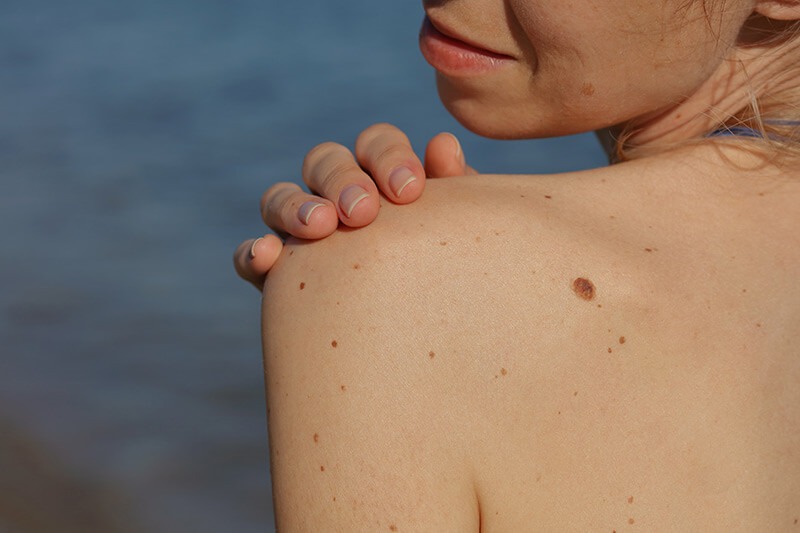“The Hidden Story of Moles: Unraveling Their Origins and the Vitality of Identification”
Unveiling the Secrets of Moles: Understanding their Origin and the Importance of Identification
Introduction: Moles, those small dark spots or raised skin growths that appear on our bodies, have fascinated and puzzled us for centuries. While some may consider them beauty marks, others wonder about their significance and potential risks. In this article, we delve into the intriguing world of moles, exploring why they appear, the factors influencing their development, and why it is crucial to identify and monitor them. Join us as we unravel the mysteries of moles and shed light on their importance in maintaining our overall health.
- What Are Moles? Before delving into their significance, it is important to understand what moles are. Moles, scientifically known as melanocytic nevi, are clusters of pigment-producing cells called melanocytes. They can vary in size, color, and texture and can be flat or raised. While most moles are harmless, some may require closer attention and monitoring.
- Genetic Influence: Genetics play a significant role in the appearance of moles. Individuals with a family history of moles are more likely to develop them. Certain genes and inherited traits can increase the likelihood of mole formation, highlighting the complex interplay between genetics and mole development.
- Sun Exposure: Excessive sun exposure is a major contributing factor to the formation of moles. Ultraviolet (UV) radiation can trigger the growth of melanocytes, leading to the development of new moles or the darkening of existing ones. Protecting the skin from harmful UV rays is essential for minimizing the risk of mole proliferation.
- Hormonal Changes: Hormonal fluctuations, such as those occurring during puberty, pregnancy, or hormone therapy, can influence the appearance of moles. These hormonal shifts can stimulate the growth of melanocytes, resulting in the emergence of new moles or changes in the existing ones.

- The Importance of Identification: Identifying and monitoring moles is vital for several reasons. Firstly, it allows for early detection of potentially dangerous moles that may indicate skin cancer, such as melanoma. Regular self-examinations and professional skin screenings can help identify suspicious moles, enabling timely intervention and treatment if needed.
- Differentiating Harmless Moles from Concerning Ones: While most moles are harmless, it is crucial to be aware of certain warning signs that may indicate a potential problem. These signs include changes in size, shape, color, or texture, irregular borders, itching, bleeding, or discomfort. Identifying such changes in moles can prompt further evaluation and professional medical advice.
- Skin Cancer Awareness: Moles can serve as indicators of skin cancer risk. Asymmetrical or irregularly shaped moles, moles with uneven color distribution, or those larger than a pencil eraser may be potential warning signs. Being knowledgeable about these warning signs and seeking medical evaluation when necessary can aid in early detection and prevention of skin cancer.
- Regular Monitoring: Monitoring moles on a regular basis allows for the detection of any changes over time. Keeping track of the size, shape, color, and any alterations in moles can aid in identifying potential concerns and seeking appropriate medical attention promptly.
- Professional Evaluation: Seeking professional evaluation, such as from a dermatologist, for a thorough skin examination is essential. Dermatologists can assess moles using various techniques, including dermoscopy and biopsy if necessary, to determine their nature and identify any potential risks.
- Promoting Skin Health: Understanding the significance of moles promotes overall skin health and encourages proactive measures to protect against harmful UV rays, such as using sunscreen, wearing protective clothing, and practicing sun-safe behaviors.
Conclusion: Moles, while often benign, serve as important indicators of our skin health. Understanding
